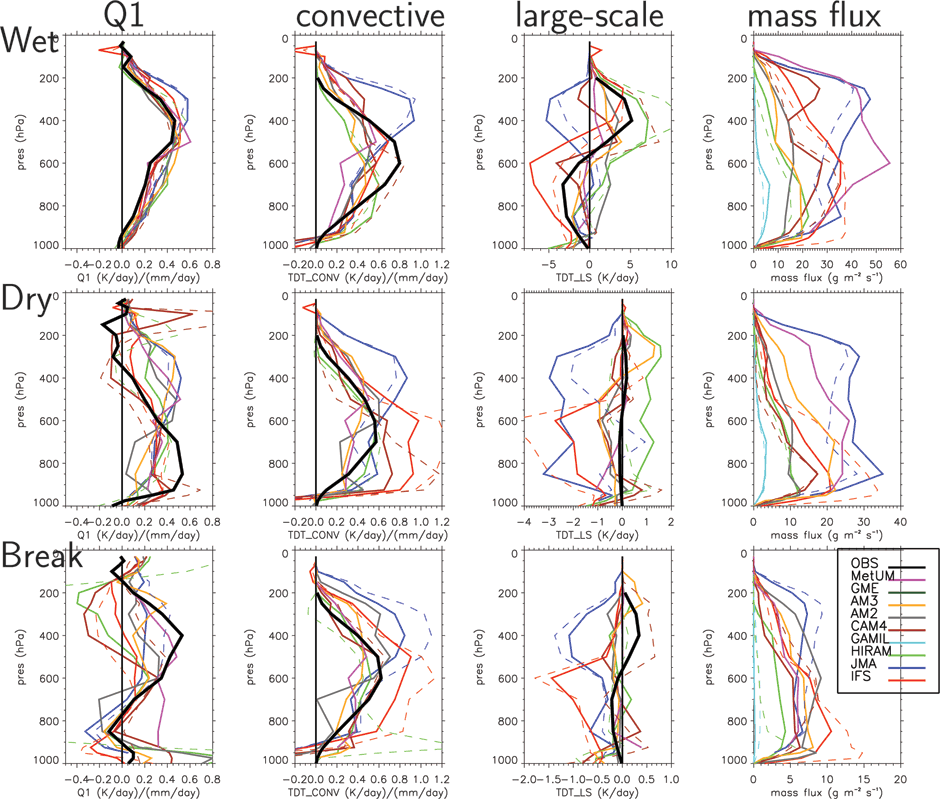April 27th, 2012
Key Findings
- Nine forecasts using atmospheric general circulation models, initialized daily from realistic global analyses, captured well the evolution of large-scale circulation and thermodynamic fields, but cloud properties differed substantially among models.
- Compared with the relatively well simulated top-heavy heating structures during the wet and break period, most models had difficulty in depicting the bottom-heavy heating profiles associated with cumulus congestus during the dry period. Models with convection scheme responsive to the free tropospheric humidity simulate cumulus congestus well.
- Resolution has relatively minor impact on simulated cloud properties, but it modulates the diurnal cycle of precipitation with large-scale precipitation generally increased in high resolution forecasts.
Yanluan Lin, L. J. Donner, J. Petch, P. Bechtold, J. Boyle, S.A. Klein, T. Komori, K. Wapler, M. Willett, X. Xie, M. Zhao, S.Xie, S. A. McFarlane, C. Schumacher. Journal: Journal of Geophysical Research. DOI:10.1029/2011JD017018
Summary
An intercomparison of global atmospheric model simulations of tropical convection has been presented and evaluated with available observations collected during the TWP-ICE field experiment. Short simulations initialized from the ECMWF analysis have been used to constrain model large-scale states and thus isolate model systematic biases originating from various physical parameterizations. With realistic thermodynamic and kinematic fields captured in various weather regimes (wet, dry, and break), model precipitation, cloud properties (LWC, IWC, cloud fraction), radiation, and vertical heating profiles respond accordingly in these regimes. Despite somewhat realistically simulated precipitation, there are substantial cloud property discrepancies among the models, which are mainly influenced by cloud and convective parameterizations.
Compared with the relatively consistent response of total and convective heating to the strong forcing in the wet period, the model responses in the dry and break period are more diverse when the forcing is relatively weak. Cumulus congestus in the dry period are poorly simulated by most models and the overestimated deep convection results in a moist bias above the congestus top (700 hPa) in these models. Compared with the bottom-heavy heating profile observed in the dry period, these models tend to have heating reaching an altitude too high. Models (CAM4 and IFS) with their convection scheme responsive to the free tropospheric humidity simulate the cumulus congestus well.
Resolution impacts on model cloud properties are relatively minor when compared with the differences across the models driven by the different cloud and convective schemes. Model precipitation partitioning is modulated by resolution with an overall increase of large-scale precipitation with increased resolution. Peaking at night, large-scale precipitation modifies the total precipitation diurnal cycle in some models. Resolution does not necessarily improve model systematic biases.



